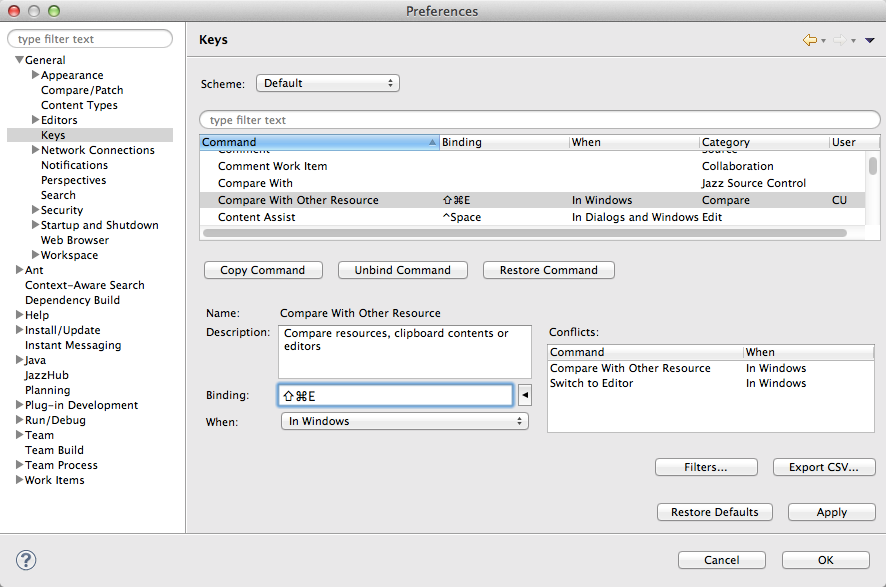How do you resolve the "evil twin" scenario between two SVN imported code bases
The following scenario.
Two version code bases that share some code changes.
v10
v11
with a separate feature branch in both v10 and v11
Base code for v10 and v11 imported from SVN to RTC - no issues
in v10 now import v10 feature branch into v10 component - separate stream
merge V10 base code changes from RTC into new imported v10 feature branch - no problem
repeat this for v11.
Each code base v11 and v10 now have corresponding feature stream in sync with base code stream
Create workspace for v11 feature stream
Change target to v10 feature stream
Evil Twin scenario is introduced?
Any insight on how to resolve this situation.
RTC 4.0.6
Two version code bases that share some code changes.
v10
v11
with a separate feature branch in both v10 and v11
Base code for v10 and v11 imported from SVN to RTC - no issues
in v10 now import v10 feature branch into v10 component - separate stream
merge V10 base code changes from RTC into new imported v10 feature branch - no problem
repeat this for v11.
Each code base v11 and v10 now have corresponding feature stream in sync with base code stream
Create workspace for v11 feature stream
Change target to v10 feature stream
Evil Twin scenario is introduced?
Any insight on how to resolve this situation.
RTC 4.0.6
2 answers
Hi Wendy,



Depending on the extent of the conflicts we can try different ways of merging. Should both streams be loaded in the sandbox then the Eclipse compare can be used for example. Once it's completed then we can just use either resolve with mine or resolve with proposed, depending on how the files were merge and the selection under pending changes view.
I understand it may be an issue when we are talking about thousands of code's line.
That said, for merging with Eclipse I assigned a shortcut to the Compare with other Resource; I selected the file I wanted to compare and it lead me to the compare tool which is similar to RTC's one. I've attached some screenshots that details how I got there.



Best regards,
Rafael.
Comments
Hi Rafael
the concern here is the code base identifies 95% of the files as deleted in the current workspace. Causing the evil twin syndrome. The code streams were imported separately for the base versions so all of version 10 was brought in then all of version 11. The streams used were separate. I am concerned that this method of importing will continue to produce the evil twin symptom. Which will not be acceptable in the situation moving forward. Our requirement is to be able to deliver to the either the forward stream or backport some changes. Perhaps we need to look at how the import was done. It does not seem to resolve the symptom to address it with a current merge. The effect continues with each attempt to merge.
Caveat: I have not used the Subversion importer, so these comments are based on the documentation in article https://jazz.net/library/article/650
I'm guessing that you neglected to pick an appropriate baseline from the v10 stream when you imported the v11 stream. The key section of the article for this is "Techniques for Importing Multiple CVS/SVN Branches". In particular, in step 1, when you imported the v10 stream, it is important that you generated RTC baselines for the branch/tag points. Then in step 2, before importing the v11 stream, that you create an RTC repository workspace with the baselines that are the appropriate baselines that form the "base" for the v11 stream. And then in step 3, that you select the component from that workspace when prompted for the target component.
I'm guessing that you neglected to pick an appropriate baseline from the v10 stream when you imported the v11 stream. The key section of the article for this is "Techniques for Importing Multiple CVS/SVN Branches". In particular, in step 1, when you imported the v10 stream, it is important that you generated RTC baselines for the branch/tag points. Then in step 2, before importing the v11 stream, that you create an RTC repository workspace with the baselines that are the appropriate baselines that form the "base" for the v11 stream. And then in step 3, that you select the component from that workspace when prompted for the target component.